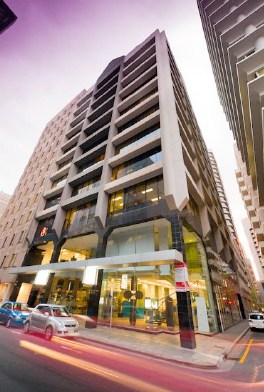Property developers in southern Australia are using the current mining boom to look for for opportunities amongst the surge in demand for office space that has been seen recently in other Australian locations. Property analysts have suggested that since Adelaide’s building vacancy rate has reached 7.7%, there is evidence that an equilibrium point between supply and demand for office space has been reached. So, in order to find evidence of potential demand for commercial properties, investors are focusing on several new developments that have been attracting a good deal of attention.

These developments include two new Australian Tax Office buildings (of 34,000 and 20,000 square meters), as well as new structures for Bendigo Bank and Adelaide Bank. Since there are several major property developments scheduled for completion later this year, investors are keenly watching this area for signs of new opportunities. Economic health in Adelaide’s central business district remains strong, but there has not yet been significant increases in demand to match this strength. Here, we look at some of the reasons why this might be changing in the next few years.
BHP Billion’s Olympic Dam Project
With the new 13,500sqm building that was recently constructed for the South Australian Police, the property industry in southern Australia is expected to see renewed growth trends and increased opportunities for investment. Whether or not these optimistic projections for South Australian commercial properties come to fruition will depend heavily on the success of BHP Billiton’s plans for expansion in its Olympic Dam project. This development is expected to create additional needs for mining and engineering office space that is likely to generate much wider interest in these areas.
As the Olympic Dam project moves forward, some analysts have suggested that the company could see increased needs for office space of 35% over the next 12 years. This would mean BHP will require another 75,000 square meters of office space over that period. But there is actually a possibility that these estimates could be on the low side if BHP decides to establish its uranium headquarters in Adelaide. It should be noted that there are risks to these expectations, as BHP’s CEO, Marius Kloppers, has made comments which suggest global financial uncertainties could stall these plans before any final commitments are made. At the moment, plans are set to continue barring any major external shocks to the company’s profit performance.
Relying on Adelaide’s Mining Expansion
While there is still some uncertainty with respect to BHP’s final development plans in Adelaide, there is much less doubt that the state’s growing mining sector will generate demand for corporate office space in the region. According to some estimates, the current development projects in mining companies are valued at $8 billion and these inflow trends are expected to continue as long as investors remain focused on the area’s rich commodities deposits. Most analyst reports suggest that with the trend growth that is currently being seen, vacancy rates are likely to continue to drop, driving rental prices higher.
Relaxing Building Requirements
rguments for continued growth in Adelaide are being aided not only by the positive trends in national employment data but also by the relaxed building requirements that have been implemented in recent months. With relaxed height limits and increases in the number of development sites that are available, it is clear that the local government is in favor of a pro-business direction that is creating renewed opportunities for office space developers.
While some might express concern that there is now a glut in property development (citing the Police, Australian Tax Office buildings and the bank developments in the private sector), there is more reason to believe that companies will be looking to move operations (looking for lower rent costs) than there is to expect that these properties will be vacant for any extended period of time.
Adelaide Rent Prices Reach All-Time Highs
With the relatively low numbers of vacancies, rental costs in prime areas have reached all-time highs of $550 per square meter (gross). It should also be noted that these prices have seen very little pullback since then, as prices are still seen at $500 per square meter in the prime market areas of the city center, and $450 on the edges of the business district. With analysts expecting growth rates of 3.5%, some estimates have suggested that rents in the prime location could approach the $600 level by 2014. While these figures seem overly optimistic to some, they are looking more and more attainable given the trends seen in cities like Perth and Sydney, where rental costs in prime areas have reached $800 and $1,000, respectively.




